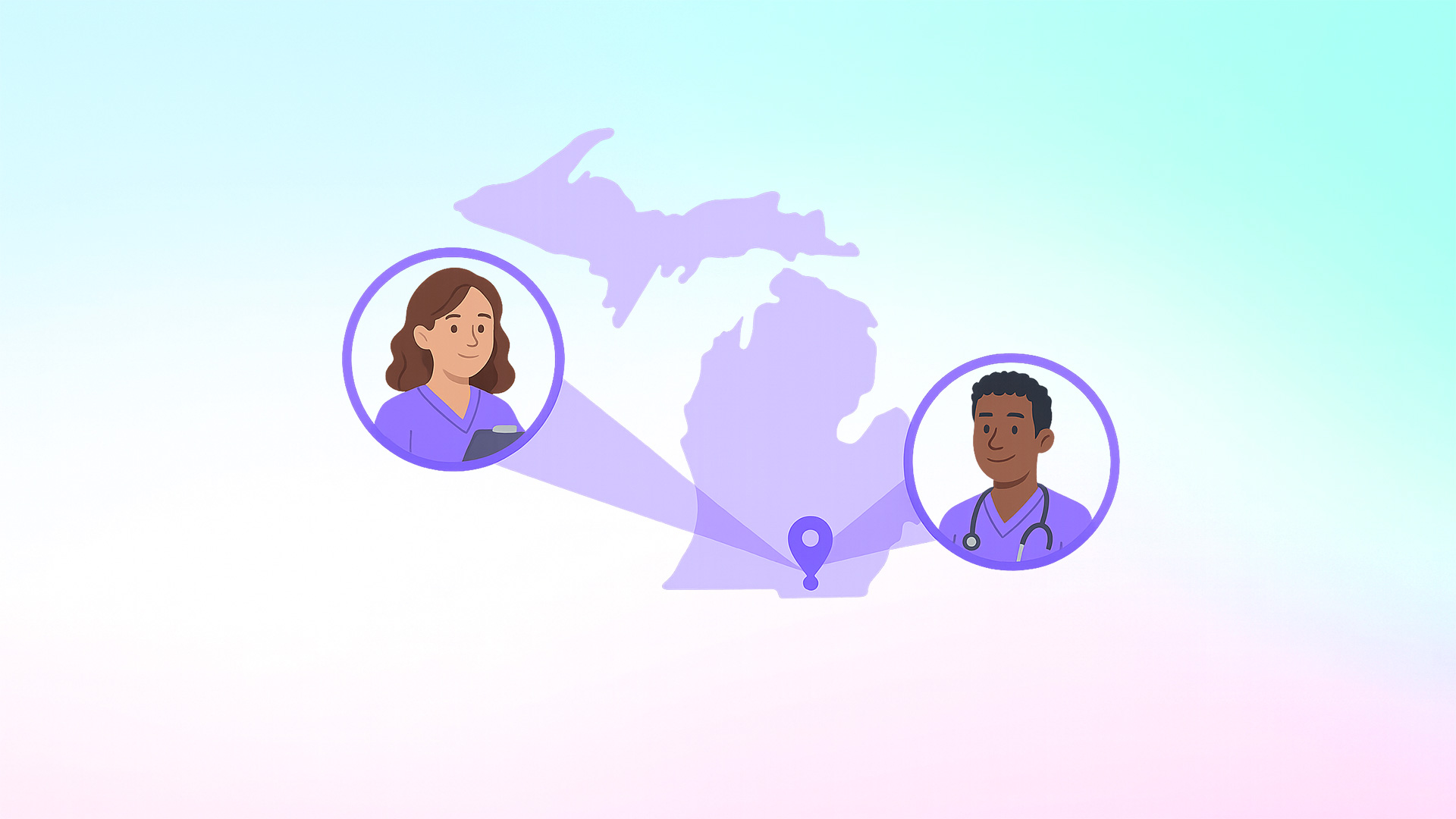Nurse practitioner students at William Paterson University are responsible for securing their own clinical placements with approved preceptors. Each program requires between 510 and 680 clinical hours, completed under licensed NPs or MDs. Students must meet all compliance and documentation requirements through Exxat before starting clinical practice.
TL;DR – William Paterson University NP Clinical Placements
- NP students at William Paterson University must secure their own clinical placements and preceptors.
- The Adult-Gerontology NP track requires 510 hours; the Family NP track requires 680 hours.
- All compliance documents are submitted through Exxat before starting clinical practice.
- Students who lack an approved preceptor or compliance clearance may be dropped from the course.
- NPHub helps students find vetted preceptors, handle documentation, and stay on track for graduation and licensure.
When Deadlines Start to Feel Too Close
The weeks move fast once you reach the clinical phase of your nurse practitioner program at William Paterson University.
You’re finishing courses, updating your clinical documentation, balancing shifts, and watching the application deadline for your clinical placement inch closer on your calendar. It’s that familiar mix of excitement and pressure, you’ve worked hard to get here, but the next step depends on finding the right clinical site and preceptor.
At William Paterson’s School of Nursing, the transition from classroom learning to clinical practice is designed to give students hands-on experience in real healthcare settings.
Under faculty supervision and professional guidance, you’ll apply your skills alongside interdisciplinary teams, care for real patients, and learn to think like a provider. It’s a turning point that turns into the moment when theory becomes practice and motivation turns into mastery.
But getting to that point takes persistence. Many students, especially those balancing full-time employment and life, find the placement process challenging. Schedules, paperwork, and site availability all demand time and coordination. That’s where having reliable support makes all the difference.
If you’re preparing for your next rotation or still searching for a preceptor, you can create a free NPHub account to explore vetted clinical placement opportunities near you. It’s a faster, safer way to stay on track toward your degree, licensure, and graduation without last-minute stress.
Next, let’s take a closer look at how William Paterson University structures its NP programs and what you can expect from your clinical experience.
William Paterson University Nursing Program Requirements
At William Paterson University’s School of Nursing, nurse practitioner students gain both the academic foundation and the hands-on clinical experience needed to provide evidence-based, patient-centered care.
Each Master of Science in Nursing (MSN) track combines advanced coursework with supervised clinical practice, preparing graduates to meet licensure and certification standards upon graduation.
The programs are accredited, flexible for working nurses, and focused on building essential skills in patient care, leadership, communication, and collaboration with interdisciplinary teams across diverse healthcare settings. Students are guided by expert faculty and supported through every phase from enrollment to their final clinical placements.
Adult-Gerontology Nurse Practitioner (AGNP) in Primary Care
The Adult-Gerontology Nurse Practitioner in Primary Care program is designed for registered nurses who want to advance their scope of practice and provide comprehensive care to adult and older adult populations.
Students complete 39 credit hours of coursework and 510 clinical hours, gaining advanced knowledge in:
- Nursing research strategies and evidence-based practice
- Population health and social policy
- Advanced pathophysiology, pharmacology, and health assessment
- Leadership and systems improvement in healthcare delivery
Graduates are prepared to apply for national certification and deliver safe, effective, and culturally competent care across diverse communities.
This online program offers flexibility without compromising quality, helping nurses balance work, education, and personal responsibilities.
Family Nurse Practitioner (FNP)
The Family Nurse Practitioner track prepares students to deliver primary care to patients and families across the lifespan from pediatrics to geriatrics.
Students complete 47 credit hours and 680 clinical hours, combining theory and clinical participation to build advanced competencies in diagnosis, health promotion, and disease prevention. The FNP curriculum covers:
- Advanced pharmacology, pathophysiology, and health assessment of pediatric, adult, and childbearing clients
- Health policy and population health
- Nursing research and evidence-based decision-making
- Leadership and professional communication
Taught by experienced faculty, the FNP program emphasizes practical application, critical thinking, and professional accountability, ensuring students are prepared for real-world clinical settings and successful licensure.
Whether your concentration is adult-gerontology or family practice, each MSN track at William Paterson University connects classroom learning with real clinical experience under the supervision of qualified preceptors.
These rotations allow you to apply theory to practice, refine your communication with patients, and gain the confidence to lead in modern healthcare environments.
If you’re preparing to begin your clinicals, you can create a free NPHub account to find vetted preceptors and approved clinical sites that align with your program’s requirements. It’s the easiest way to stay organized and keep your path to graduation on schedule.
As you progress toward your practicum, understanding how William Paterson University manages its clinical placement process will help you plan ahead, meet your deadlines, and make the most of your learning experience.
Let’s break down how the process works and what kind of support you can expect from the university.
The Clinical Placement Process at William Paterson University
At William Paterson University, nurse practitioner students are responsible for finding and securing their own clinical placements. It’s a model that gives students autonomy but also one that requires strong organization, early planning, and persistence.
Each student must identify a qualified preceptor, such as a licensed nurse practitioner (NP) or medical doctor (MD), and a suitable clinical site that aligns with their specialty and program requirements.
Once a potential preceptor agrees to supervise you, you’ll need to complete the official Preceptor Information Request Form (often called the placement request or “wishlist”) and upload the preceptor’s CV or resume through Exxat, the university’s clinical documentation platform.
It’s important to move early. Students who don’t have a confirmed preceptor or who haven’t met compliance requirements at least two weeks before the semester begins risk being dropped from their course.
For many NP students the process can quickly become overwhelming. Between reaching out to potential preceptors, following up with clinics, and tracking documentation, it’s easy for weeks to slip by without progress.
That’s why some choose to create a free account at NPHub to explore and secure available vetted preceptors and clinical sites, reducing the back-and-forth and helping you stay focused on your coursework and deadlines.
The truth is, clinical placement takes coordination, and missing small details can delay your clinical experience or even push your graduation date. But it doesn’t have to be that stressful. With the right preparation and the right tools you can take control of the process instead of letting the process control you.
If your upcoming semester is approaching and you still need to confirm a site, don’t wait until it’s too late. Go to NPHub, create your account for free and find preceptors who meet your program and licensure requirements.
Now what can you do to stay a step ahead in the clinical placement process and make sure nothing stands between you and your start date?
Securing Your Site Without the Last-Minute Stress
Deadlines in the nurse practitioner program move faster than you expect, especially once clinical paperwork and site approvals come into play.
Staying ahead needs a strategic mind set that trickles down from starting early and keeping every requirement in motion. Here’s how to stay on track and protect your progress toward graduation:
- Start outreach early. Contact potential preceptors at least three months before your intended start date. It allows time for verification, credential collection, and uploading materials to Exxat.
- Track compliance requirements. Keep a single checklist for health documentation, background checks, and insurance proof. Upload each item as you complete it to avoid administrative delays.
- Confirm approvals before the semester begins. Don’t assume your site or preceptor is cleared and verify your approval status well before your start date.
- Maintain consistent communication. A quick follow-up can often prevent small issues from turning into major scheduling setbacks.
- Stay organized with digital copies. Keep every form and immunization record accessible in one folder in case something needs to be resubmitted.
But what happens when you do all the hard work? When you have sent out dozens of emails, filled out forms, and waited weeks with no reply? It stops feeling like networking and starts feeling like a dead end. That is usually when students start looking for real help.
NPHub was built for that exact moment, not as a shortcut but as a way to get unstuck. Instead of spending another month chasing clinics, you can find and secure a vetted preceptor who is already approved for your specialty and ready to teach. The paperwork, the coordination, the waiting, all handled. You just show up prepared to learn.
The first step you can take is to create your free NPHub account and start browsing available clinical placements in your area. Once you are matched, you will have one less thing to worry about and one major step closer to graduation.
Finding Real Support When You Need It Most
At William Paterson University, their different nurse practitioner programs give NP students the knowledge, clinical skills, and professionalism they need to care for patients and lead in advanced practice settings.
What it does not always provide is time. The self-placement model requires every student to find their own site, contact clinics, manage paperwork, and meet compliance deadlines, often while keeping up with full-time responsibilities.
That reality pushes many NP students to look for outside support, not because they are unprepared, but because the system leaves them doing too much alone and where NPHub changes the experience for them.
Not only do we help you access a network of over 2.000 preceptors all over the U.S, our team also manages the communication, documentation, and coordination that come with every placement. From the first match to the final approval, you have people who understand your deadlines and keep things moving.
For many students, that level of structure is what turns uncertainty into progress. You still do the work in your clinicals, but you do not have to spend months chasing replies or watching deadlines slip by.
If you are ready to make the placement process faster, clearer, and less stressful, create your free account and boost your preceptor search and get complete administrative support, and a clear path that keeps you moving toward graduation and licensure without losing time.
Frequently Asked Questions: William Paterson University NP Clinical Placements
1. How many clinical hours are required for NP students at William Paterson University?
Clinical hour requirements depend on your program. The Adult-Gerontology Nurse Practitioner track requires 510 hours, and the Family Nurse Practitioner track requires 680 hours of supervised clinical experience.
2. Do students find their own preceptors?
Yes. William Paterson University follows a self-placement model. NP students are responsible for identifying their own preceptors and clinical sites, typically an NP or MD who meets program standards.
3. What happens if I do not have a confirmed preceptor before the semester starts?
Students who do not have an approved preceptor or who have not completed compliance requirements two weeks before the semester begins may be dropped from the course.
4. What compliance documents are required before starting clinicals?
Students must submit proof of physical exams, urine screening, flu vaccination, background checks, NP rider, and malpractice insurance through Exxat before beginning clinicals.
5. Can I complete clinicals while working full time?
Yes, many students balance coursework, employment, and clinical rotations, but it requires careful planning to meet scheduling and documentation deadlines.
6. Can international students participate in NP clinical placements?
Yes, international students enrolled in William Paterson University’s MSN programs can complete clinical placements, provided they meet all compliance, visa, and supervision requirements.
7. Who approves clinical sites and preceptors?
All clinical sites and preceptors must be reviewed and approved through Exxat to ensure they meet the university’s academic and licensure standards.
8. What should I do if I am struggling to find a preceptor?
If your search is taking too long, you can use NPHub to connect with vetted preceptors who meet William Paterson University’s criteria. NPHub handles coordination and paperwork to help you start your rotation on time.
9. How early should I start looking for a preceptor?
It is recommended to begin your search at least three months before your intended clinical start date to allow time for verification, approvals, and compliance review.
10. Does NPHub work directly with William Paterson University?
Yes. NPHub regularly supports William Paterson University NP students and ensures all placements align with the school’s academic and licensure requirements.
Key Terms: William Paterson University NP Clinical Placements
- Preceptor
A licensed healthcare provider, such as a Nurse Practitioner (NP) or Medical Doctor (MD), who supervises and evaluates NP students during their clinical rotations. - Clinical Site
An approved healthcare setting where students complete their required clinical hours under preceptor supervision. - Exxat
The online platform used by William Paterson University to manage clinical documentation, preceptor information, compliance requirements, and approvals. - Compliance Requirements
Health and legal documentation that must be completed before starting clinicals. This includes physical exams, immunizations, background checks, NP rider, and malpractice insurance. - Clinical Placement
The process of securing and completing clinical hours at an approved site as part of the MSN nurse practitioner program. - Vetted Preceptor
A preceptor who has been verified for credentials, experience, and alignment with the program and board of nursing standards. - Licensure
The formal authorization required to practice as a nurse practitioner after graduation and successful completion of the certification exam. - NPHub
A placement service that helps NP students find approved preceptors, manage documentation, and coordinate communication with universities to ensure timely, compliant clinical placements.
About the author
- NPHub Staff
At NPHub, we live and breathe clinical placements. Our team is made up of nurse practitioners, clinical coordinators, placement advisors, and former students who’ve been through the process themselves. We work directly with NP students across the country to help them secure high-quality preceptorships and graduate on time with confidence. - Last updated
October 16, 2025 - Fact-checked by
NPHub Clinical Placement Experts & Student Support Team - Sources and references
- https://www.wpunj.edu/cosh/departments/nursing/graduate-programs/frequently-asked-questions.html
- https://online.wpunj.edu/degrees/healthcare/msn/agnp/
- https://online.wpunj.edu/degrees/healthcare/msn/fnp/
- https://www.wpunj.edu/cosh/departments/nursing/graduate-programs/handbooks.html
- https://www.nphub.com/how-it-works
Find a preceptor who cares with NPHub
Book a rotation.webp)








.webp)
.png)

.webp)



.webp)